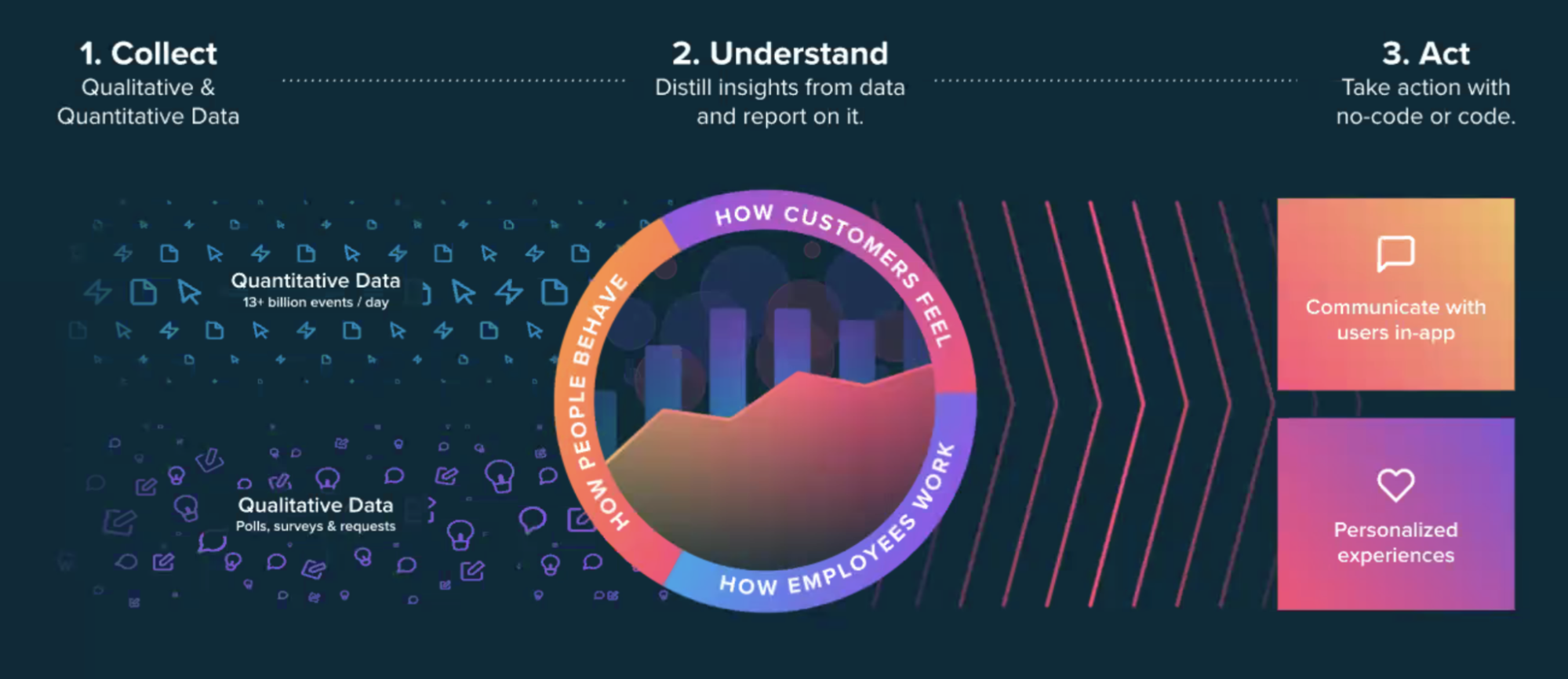Product-led organizations put their product at the heart of everything they do. The product becomes the center of their customer experience. Their internal teams use and are fully bought into it. And it orients and drives the entire organization’s go-to-market strategy.
Adopting a product-led approach isn’t just great for your customers. It can help ease the workloads of your internal teams, too. Product-led organizations lean on the product itself—its features, performance, and virality—to do a lot of the “selling” that typically falls on sales and customer success teams. This leads to better collaboration, more strategic work, and ultimately a better product.
At its core, being product led means being customer-centric—an important organizational value as users’ expectations for software have shot through the roof in recent years (thanks, Netflix!). This trend carries into B2B software, too. While many established companies are working to catch up and close the gap between the product experience their users expect and the product experience users actually get, most tech startups are adopting a product-led approach from the outset. This helps these organizations be more efficient, grow faster, and even earn higher NPS scores.

Hannah Chaplin and Marcus Andrews, both product marketing directors at Pendo, recently sat down to talk about why being product-led matters—and what it is exactly that product-led organizations do so much better than their non-product-led peers.
Read on for a summary of their discussion, then scroll to the bottom of the page to watch the full webinar.
1. Product-led organizations align around the product
Instead of turning to disparate channels to engage with customers, product-led organizations leverage the product as a communication tool. For example, the customer success team might build processes in-product to improve user onboarding, while the marketing team might leverage in-app messaging to drive cross-sell and upsell opportunities. By using product as a vehicle for communicating with customers, product-led organizations reduce the manual effort required to support their users, and build better experiences for users looking for self-service help or guidance.
2. Product-led organizations make decisions with data over gut feel
Product-led organizations balance the art of product management with a hefty dose of data science. They seek to understand exactly what’s happening inside their product, where their users are struggling, which features are being used the most, and which product requests are getting the most attention (you can do all that and more in Pendo!). Particularly as companies grow and scale, decisions based on gut feel alone can have expensive consequences, so having data to validate those choices is critical. A strong pool of data also helps product teams more confidently communicate back to the broader organization—or make a strong argument for any additional resources they need.

3. Product-led organizations use product as a marketing channel
In the past, email was one of the only ways marketers could get in touch with their customers. But the truth is, most of us don’t actually like getting emails. So instead, product-led organizations leverage in-app messages to communicate with customers—allowing teams to segment and target specific audience groups and users. In-app messaging is a highly effective tool for driving campaign goals (for example, promoting attendance or interest in an event), and also helps marketers communicate important information to customers in a highly contextual format—perfect for product launches, updates, or sunsets.
4. Product-led organizations have amazing onboarding
Product-led organizations prioritize first impressions and create incredible onboarding experiences for their users. While “white glove” service and support generally makes customers happy, product-led organizations know that this kind of one-on-one enablement doesn’t scale well. So they lean on their product to supplement their human-led onboarding programs. Automating and moving basic user training and onboarding flows inside the product frees up teams to provide more meaningful assistance and engage in high-value support with the customers who need it most.
5. Product-led organizations help users help themselves
These days, most people prefer finding solutions to problems on their own—without needing to talk to a human on the phone or over chat. Product-led organizations are great at using their product to support users by deploying various tools to meet them wherever they are. It’s a win-win: users solve problems before they happen (or easily find self-service support if they do), and support team resources are freed up to focus on more strategic work (not just answering basic tickets). Here are a few ways they do it:
-
- Self-service in-app help centers
- Personalized onboarding flows
- Product updates and news announcements
- Knowledge base integrations (e.g. Zendesk)
- In-app tooltips and tutorials
6. Product-led organizations collect feedback and communicate back
In the past, product ideas mostly came from the top down—leaving users feeling unheard and underrepresented. But product-led organizations understand that user feedback is critical for building the best product possible. They use tools like Pendo Feedback to centralize and prioritize their customers’ feedback—and to communicate roadmap and feature request updates back to users. Product-led organizations also typically have a product feedback policy in place that clearly sets expectations with their users and tells them where to go to share their thoughts.
Where should I start?
Here are a few tips for getting started on your product-led journey:
-
- Check out our resources on the Product-Led Hub—your one-stop-shop for all things product-led growth at Pendo
- Ask yourself, “How can we build a better product experience?,” and remember that the product experience is bigger than just using the product alone
- Find opportunities to leverage your product to support your people—how could the product help free up their time to focus on more strategic work?
- Align your team around product metrics, and establish a common language to measure progress across departments
If you’d like to learn more about the importance and benefits of being product led, check out the full webinar recording here:

